The Bundesliga campaign 2019/20 features several coaches with interesting tactical concepts. And it is even more interesting if two of these managers play against each other. Former RB Salzburg coach and current Borussia Mönchengladbach coach Marco Rose faced the 32-year-old Julian Nagelsmann who just joined RB Leipzig in the summer.
The following tactical analysis depicts the tactics of either coach at their new clubs and in this specific game.
Lineups and formations
Gladbach lined up in a 4-2-3-1 formation in the defensive phase. To the surprise of many, Rose lined up Breel Embolo on the playmaker position. In possession, right-winger Fabian Johnson often tucked into more central areas. With one of the double pivot moving into a more advanced area, Gladbach’s midfield shape then resembled of a diamond at times.
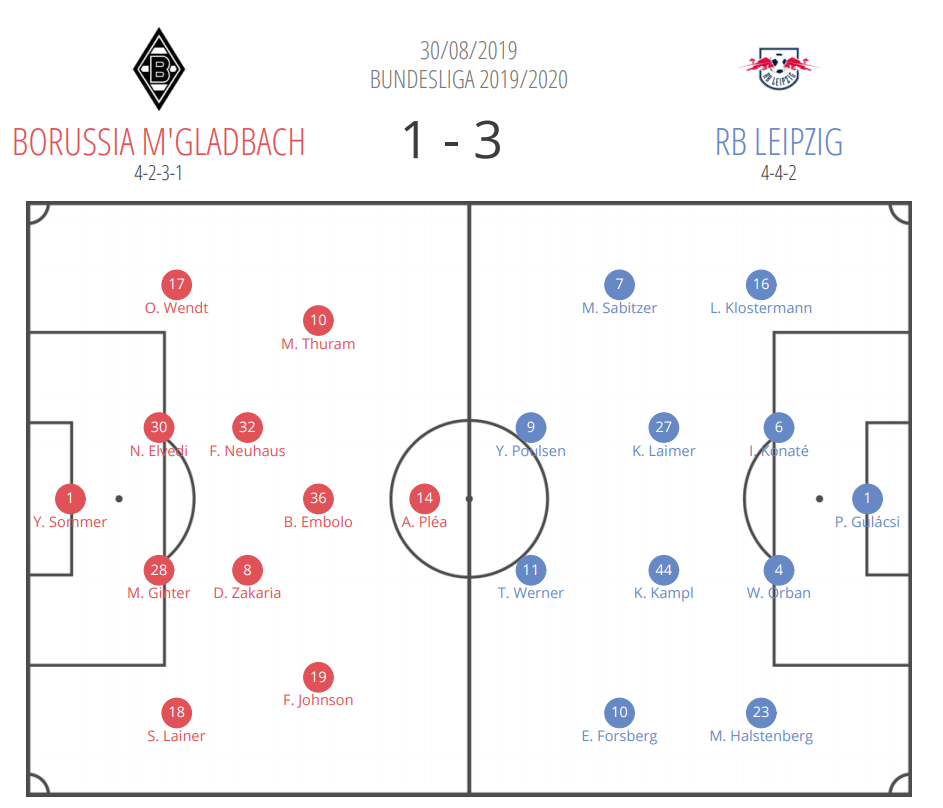
Julian Nagelsmann, on the other hand, set his team up in a 4-4-2 formation.
In possession phases, the wide players of the midfield four tucked inside while the striking duo consisting of Timo Werner and Yussuf Poulsen positioned themselves a bit wider.
Gladbach’s asymmetrical attacking approach
Marco Rose’s team set up, as already mentioned, with a diamond in midfield. However, Rose did not deploy a typical striking duo in front of that but tasked attacker Marcus Thuram (White #19) with providing width on the left wing. This caused an asymmetrical shape with two players on the left wing and only right-back Stefan Lainer (White #18) attacking down the right.
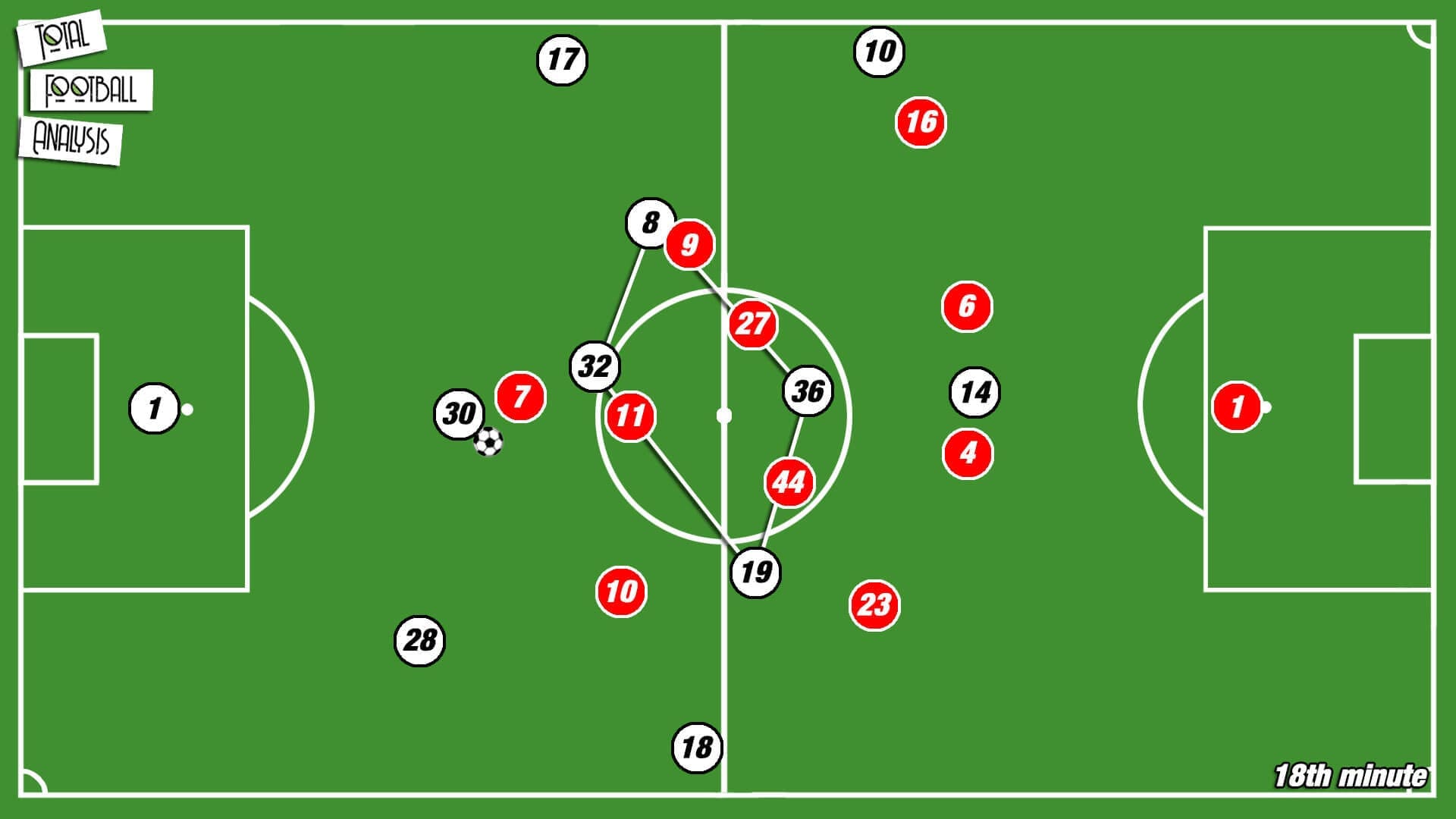
The idea lying behind this was to create overloads on the left side to either break through or switch sides to their high right-back.
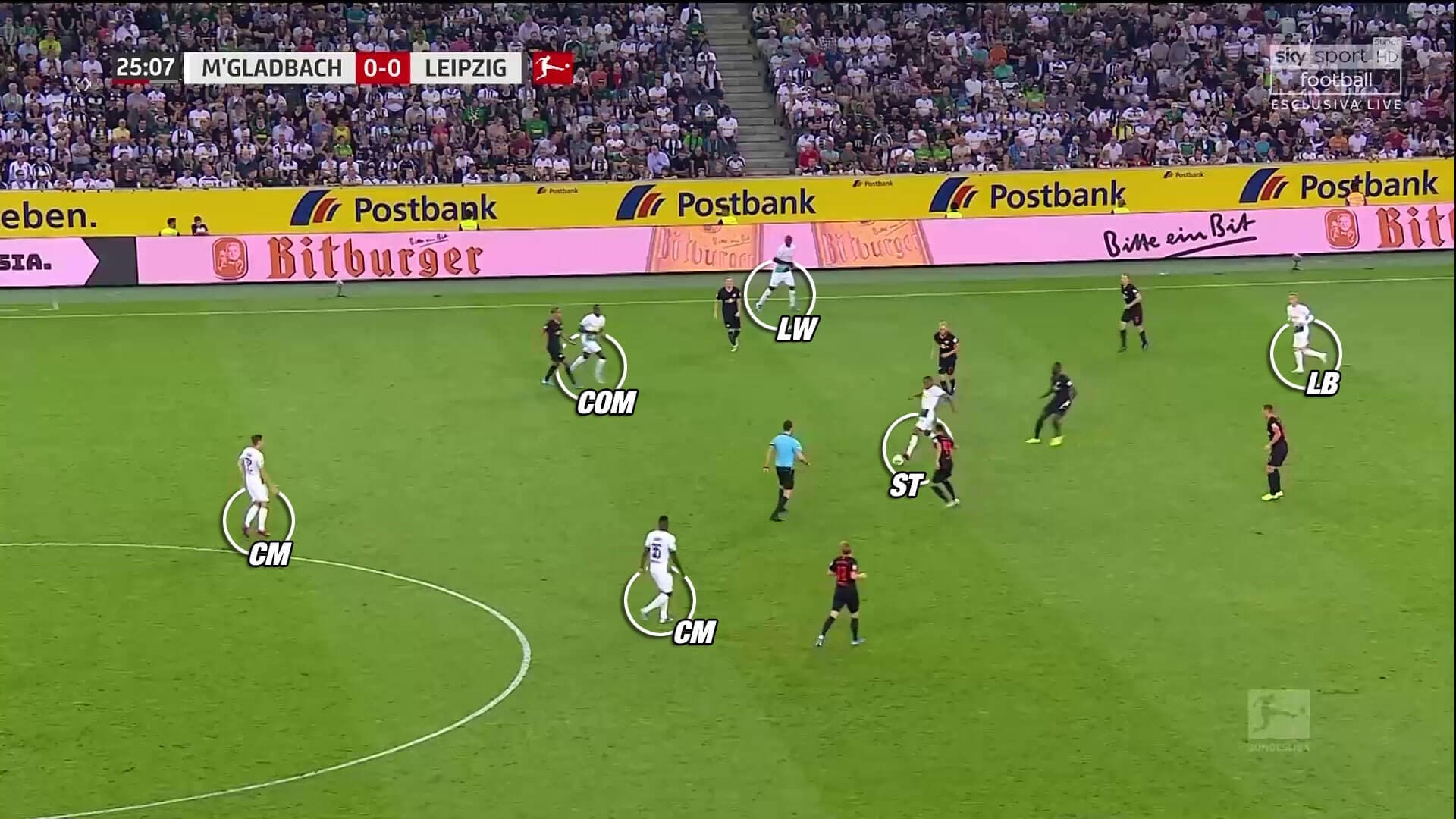
To break through, Gladbach had to combine in reduced space. Therefore, quick combinations with only a few touches on the ball were necessary. Due to their narrow defensive shape, Leipzig could prevent Gladbach from breaking through apart from the situation shown below.
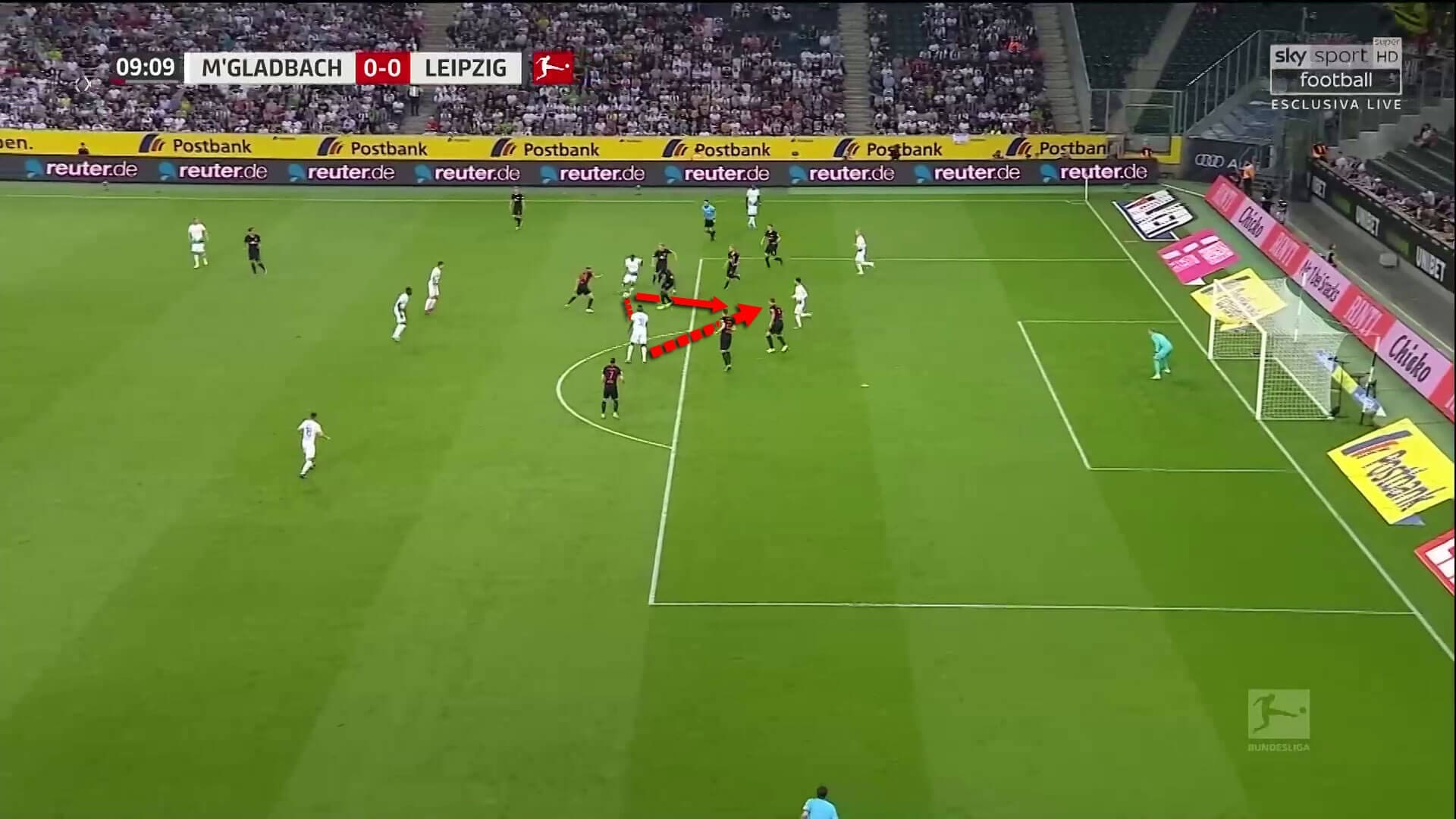
Another scenario showed how Gladbach made use of the overload on the left wing to switch play to the right.
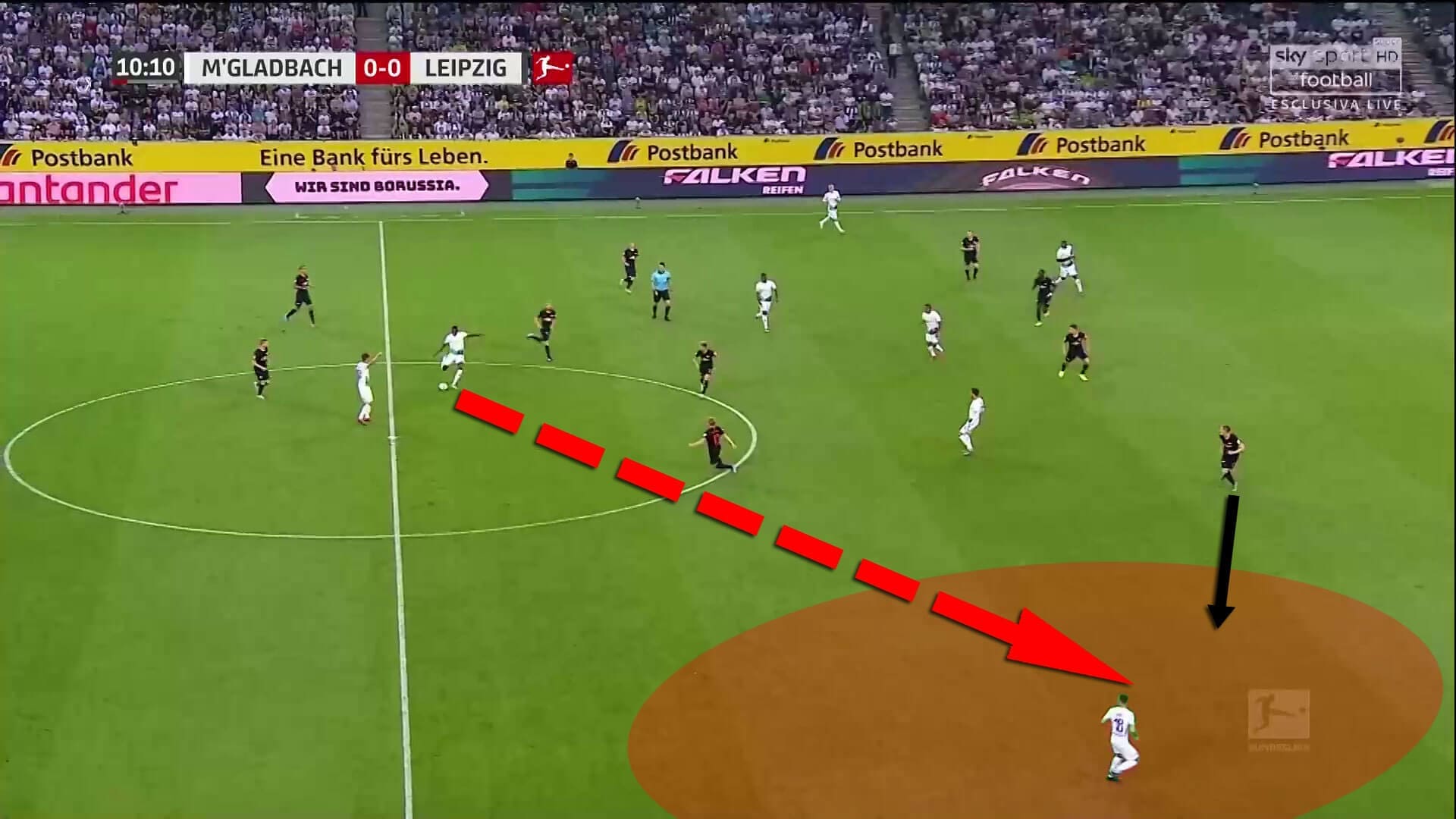
With their right-back moving up the line, Gladbach switched sides. However, as Leipzig’s left-back had no direct opponent, he could move out to the wing early enough the prevent Gladbach from getting behind the defensive line. After one attack down the right flank, Gladbach created another opportunity, though Embolo could not convert the chance.
Although Neuhaus acted as a single pivot in front of the back line, central midfielder Denis Zakaria sometimes dropped next to the German. Because Leipzig pressed with one striker while the other one marked the single pivot, Zakaria was sometimes left free and could receive the ball. But a central midfielder of Leipzig could prevent Zakaria from playing any forward passes in these situations.
Gladbach’s most successful pattern during build-up was to overplay Leipzig’s midfield with laser passes through the centre. In this case, a central midfielder found a gap within Leipzig’s block to receive the ball. But as displayed below, Leipzig’s defensive staggering offered only a few gaps.
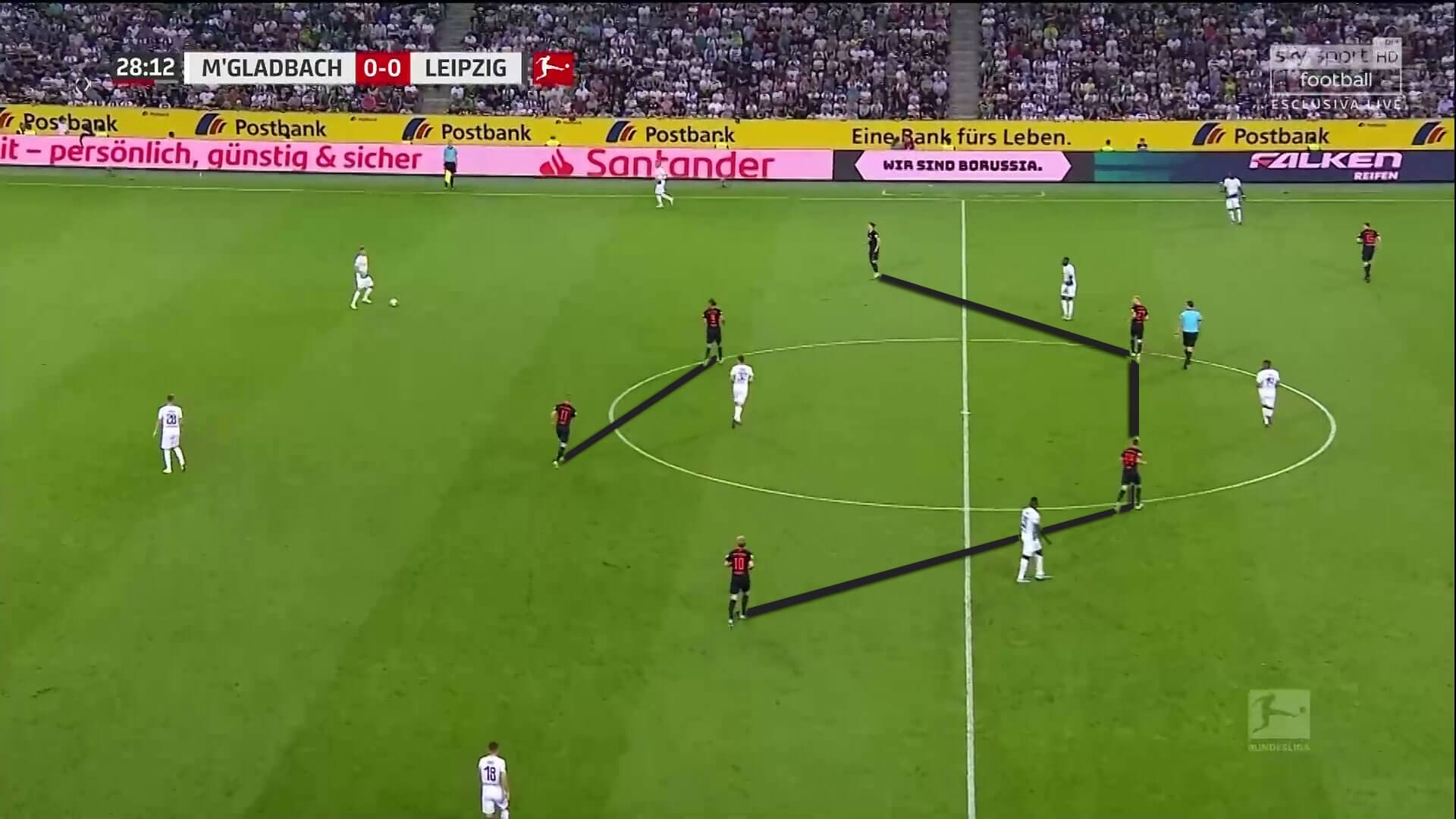
Nevertheless, most of the time Leipzig successfully prevented Gladbach from playing through the centre with their 4-4-2 setup. Gladbach’s defenders had no other option than to overplay the midfield with chipped balls towards central offensive midfielder Breel Embolo or striker Alassane Pléa. But since the centre of the pitch was full of players, the attackers were incapable of controlling and keeping the ball.
Leipzig’s box midfield
Leipzig’s offensive approach was quite similar to the one of Gladbach. Leipzig also focused on breaking the opposition press through central areas. Therefore, the double pivot stayed in front of the back line while the wide midfielders moved into playmaker positions. This created a box midfield shape with two players positioned between opposition midfield and attack and two further players between midfield and defence.
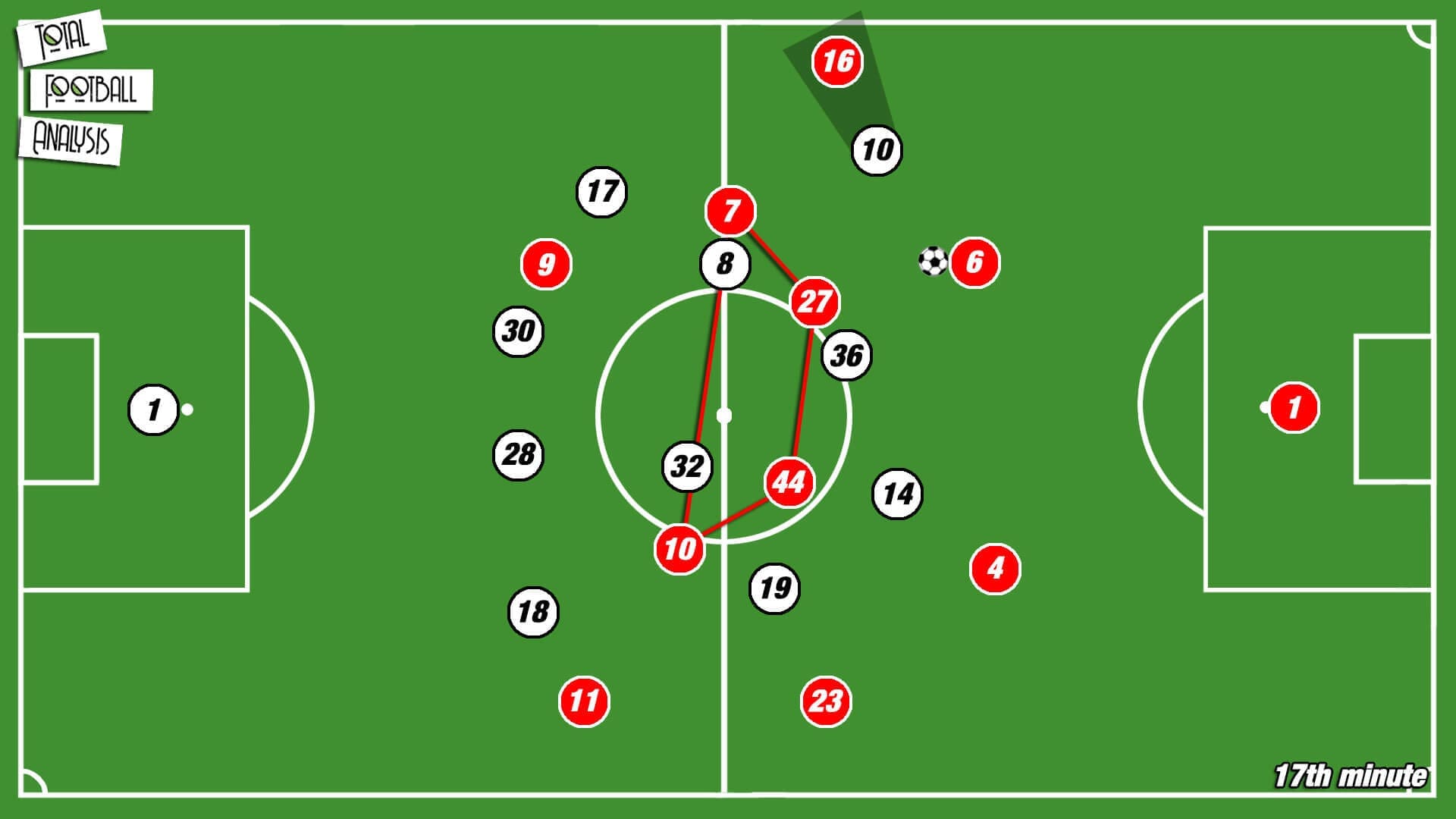
Gladbach’s defensive organisation aimed at cutting off the opposition full-back with the ball near the winger to guide Leipzig’s build-up inside.
A recurring feature of Leipzig under Nagelsmann is their concept to overload the space between the opposition defence and midfield line. This regularly enabled Leipzig to overplay Gladbach’s midfield.
Up front, Yussuf Poulsen and Timo Werner often positioned themselves in wider areas.
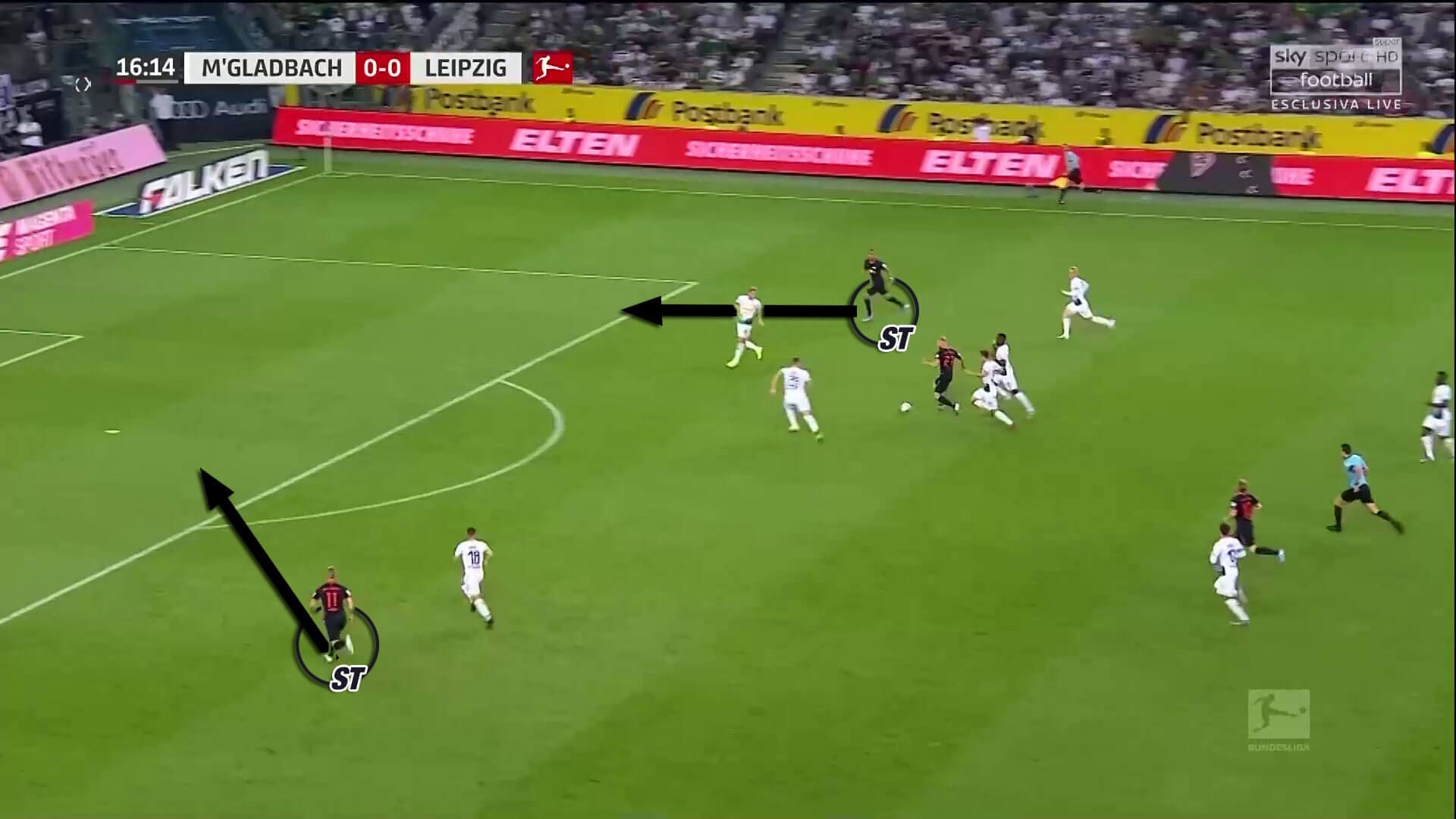
By being positioned between the opposition full-back and centre-back, Leipzig’s attackers are difficult to defend against since they only wait for the opportunity to start diagonal runs into space behind the back line.
Whenever Leipzig reached the final third, Gladbach closed down Zone-14 with their central midfielders and defended the flanks with the wingers of their 4-2-3-1, Thuram and Johnson. As a consequence, Nagelsmann’s side struggled to create chances for a long time.
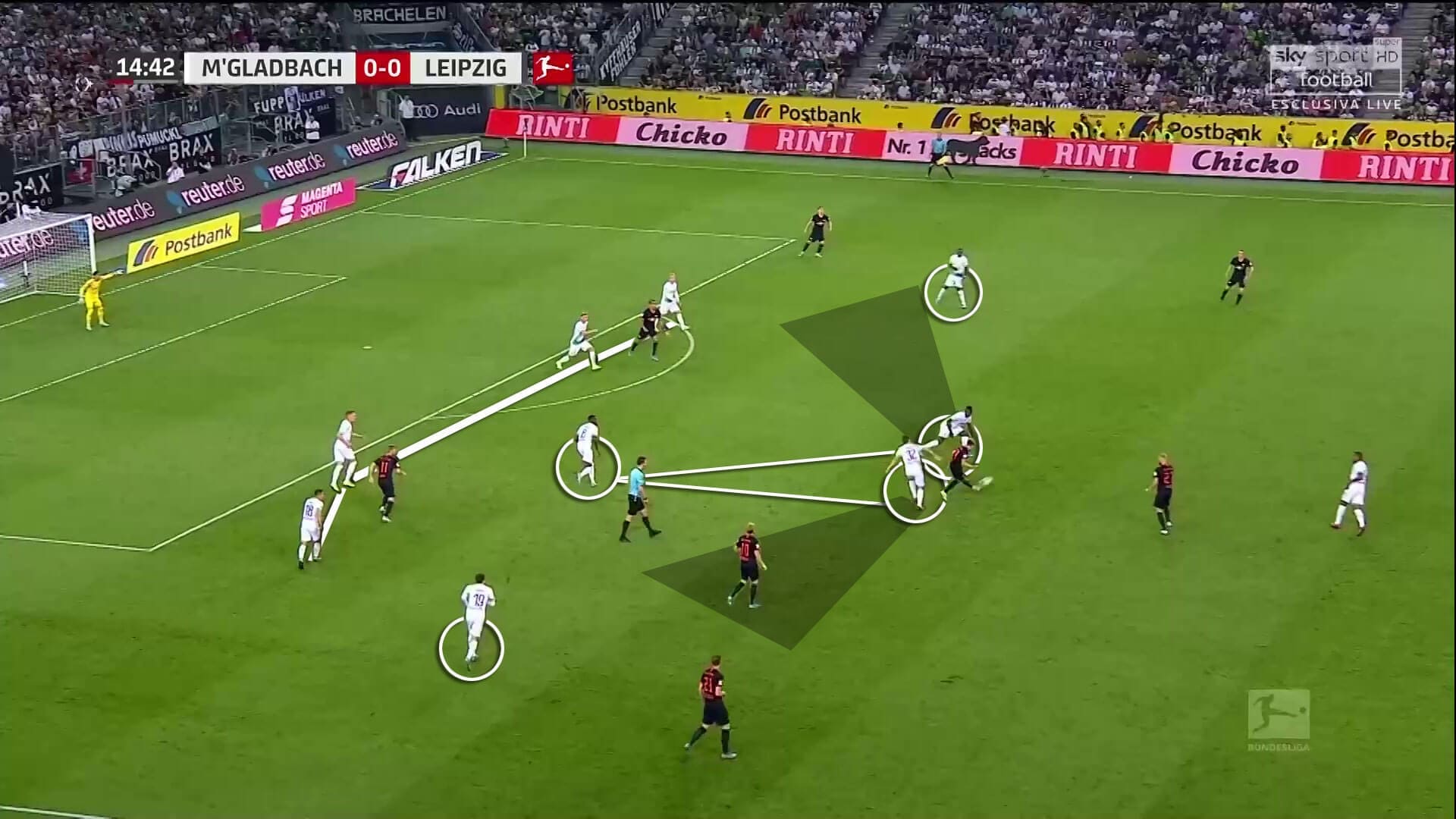
A transitional moment and Emil Forsberg’s genius then introduced Leipzig’s leading goal.
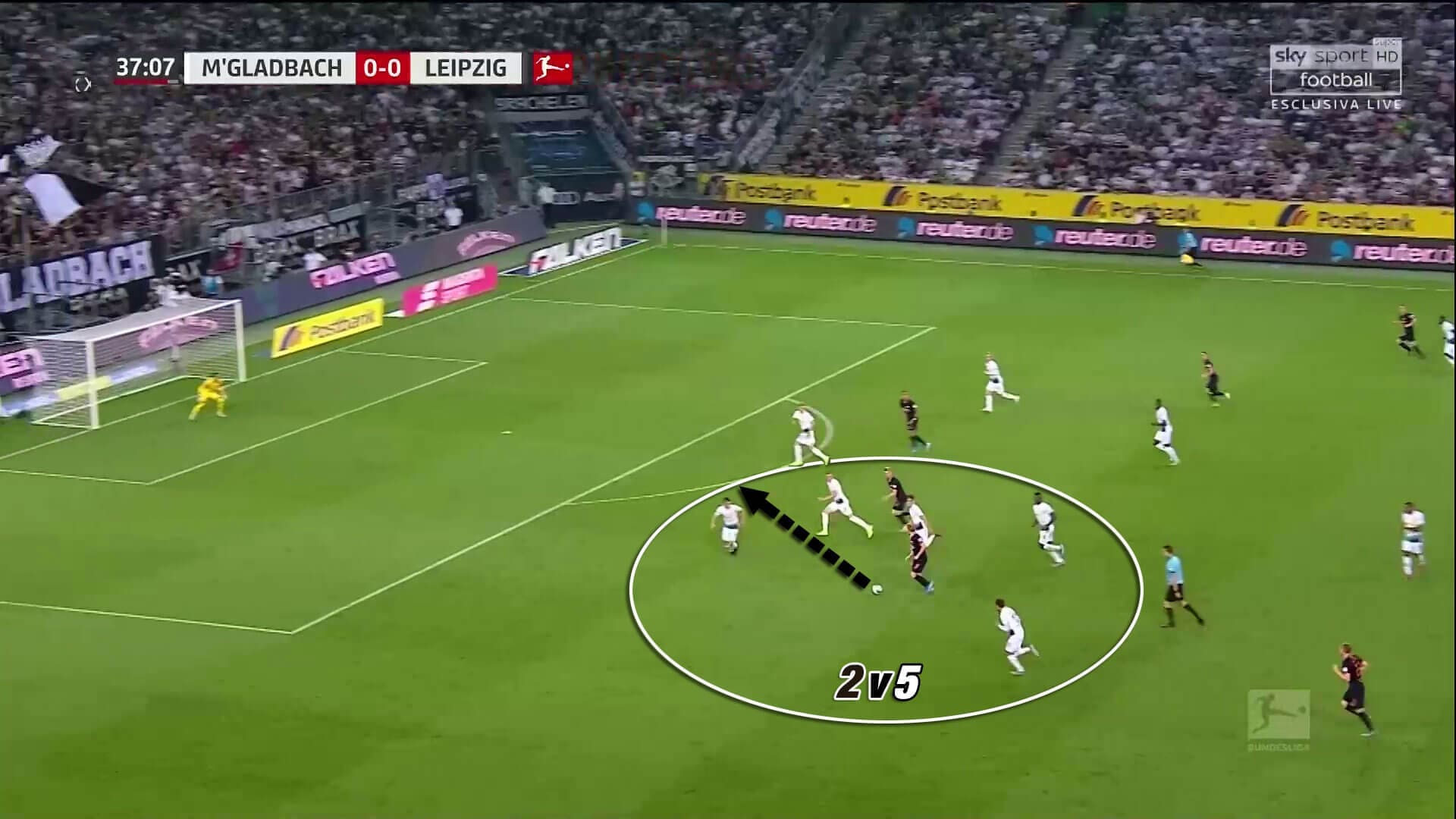
The Swede, although outnumbered and pressed, could play a through pass towards Timo Werner making use of his pace to get behind the back line and score his first goal of the night.
Leipzig’s offensive transitions
With RB Leipzig defending a bit deeper in the second half, they could utilise their counter-attacking strength. Nagelsmann’s team successfully guided Gladbach’s build-up play into areas where they held a numerical advantage.
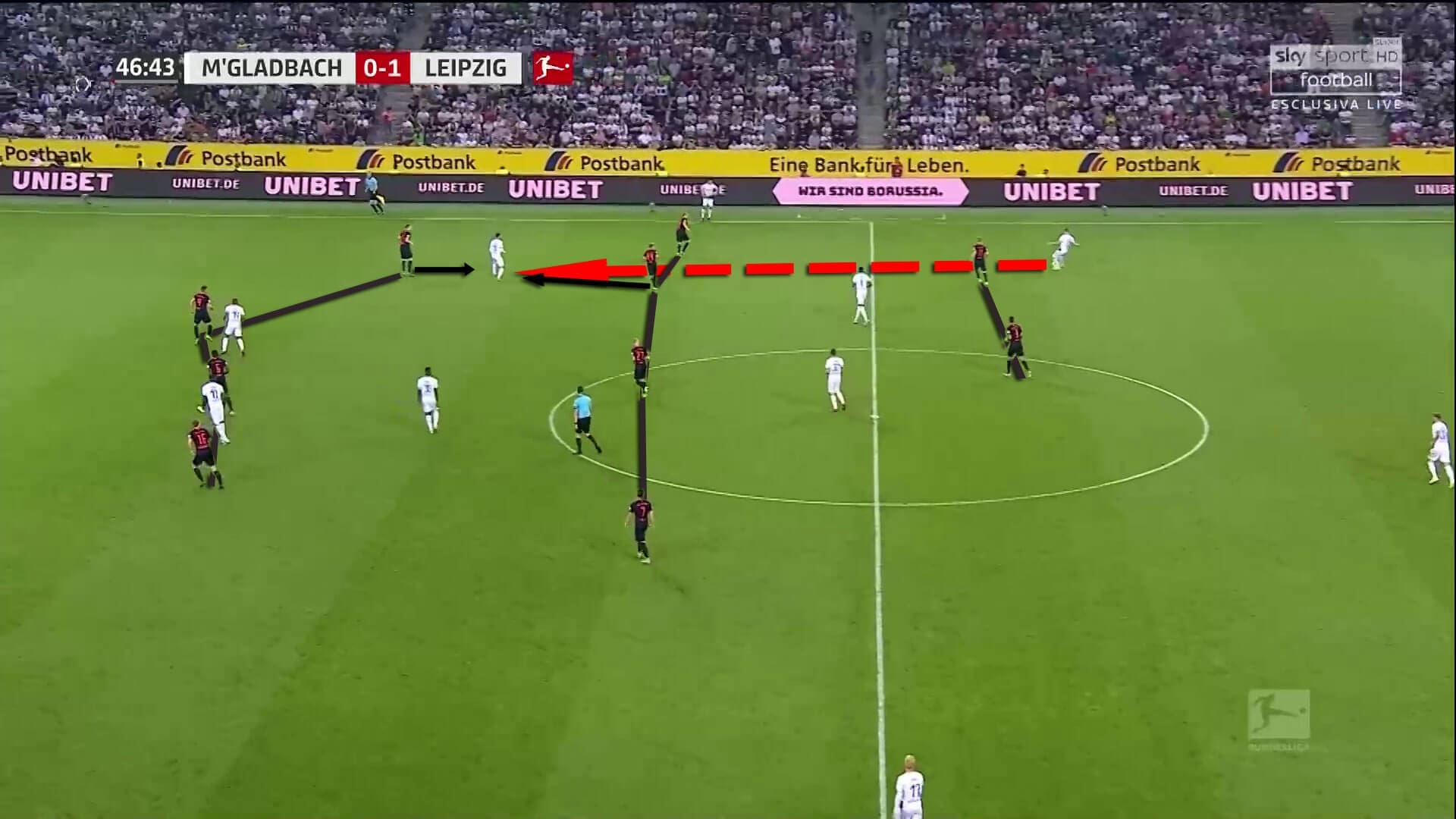
The attacking duo Werner and Poulsen tried to defend close to each other. That also came along with the advantage that they were ready to start dangerous counter-attacks once Leipzig regained possession. While Poulsen seemed comfortable to do lay-offs turned back towards the goal, Werner utilised his pace with deep runs and fast dribbling.
Werner’s second goal increased Leipzig’s lead and therefore demanded tactical changes from Borussia Mönchengladbach.
Marco Rose’s in-game adjustments
Being two goals down, Gladbach slightly changed their attacking strategy. They provided more players in depth which pinned back the Leipzig defence. With Thuram in a more central position and Johnson joining the last line, the home side was able to occupy the whole opposition back-four, opening up the much needed space on the wing in the last third of the pitch.
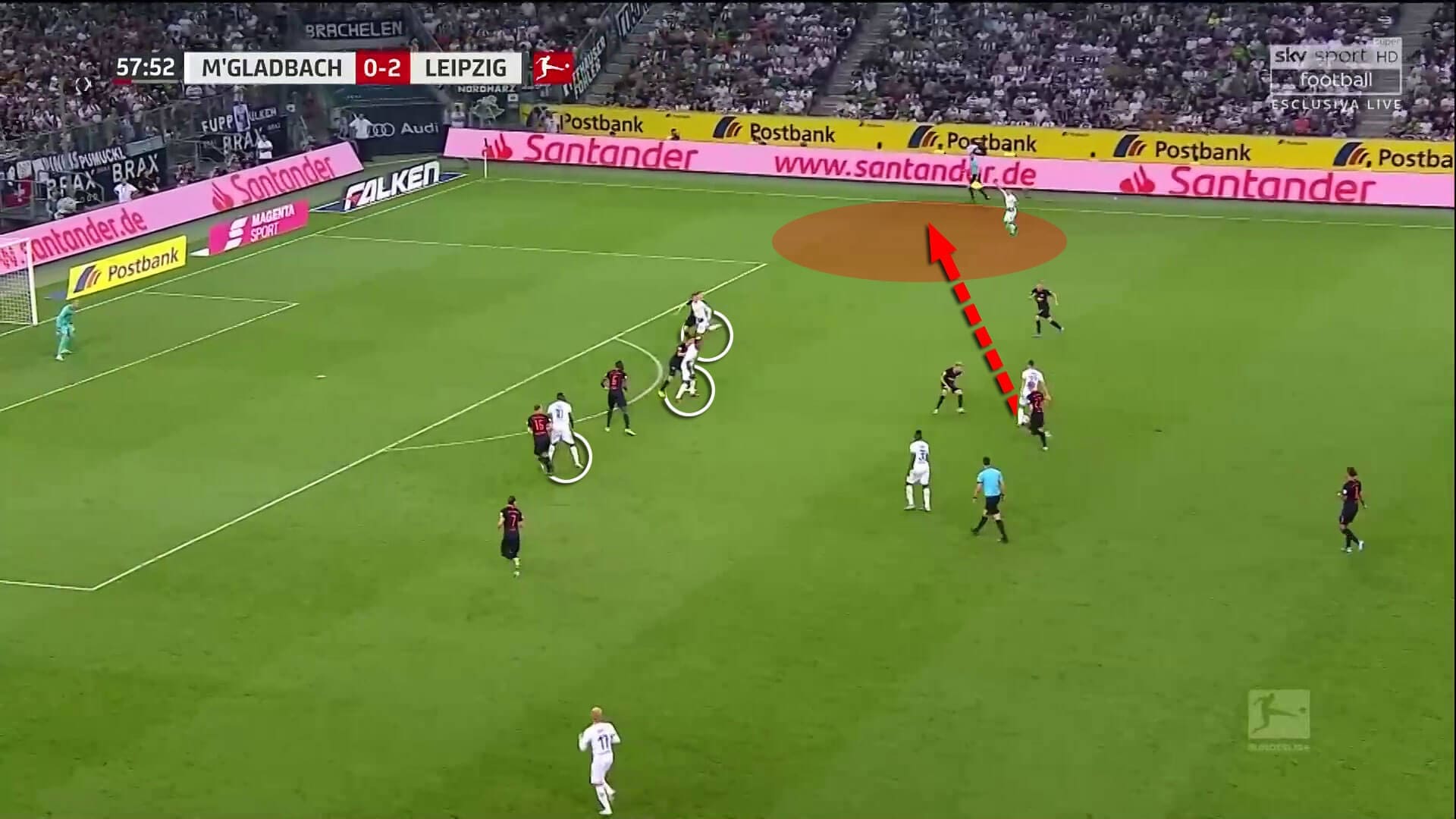
In the above-shown scenario, Rose’s team could put in a dangerous cross which got cleared in the last moment by centre-back Willi Orban.
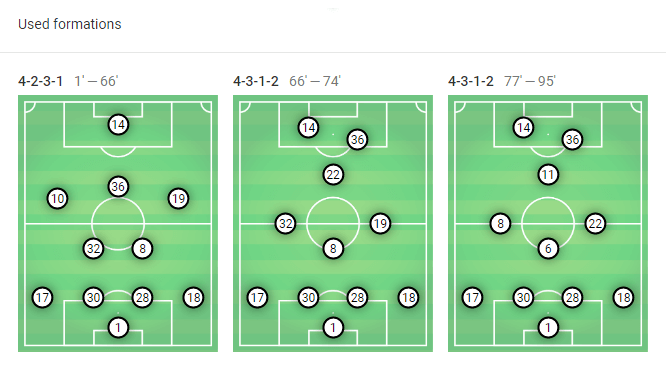
After 66 minutes played, Gladbach coach Rose decided to switch to a 4-3-1-2 formation. During the attacking phase, the advanced midfielders pushed higher forming a 4-1-3-2 shape.
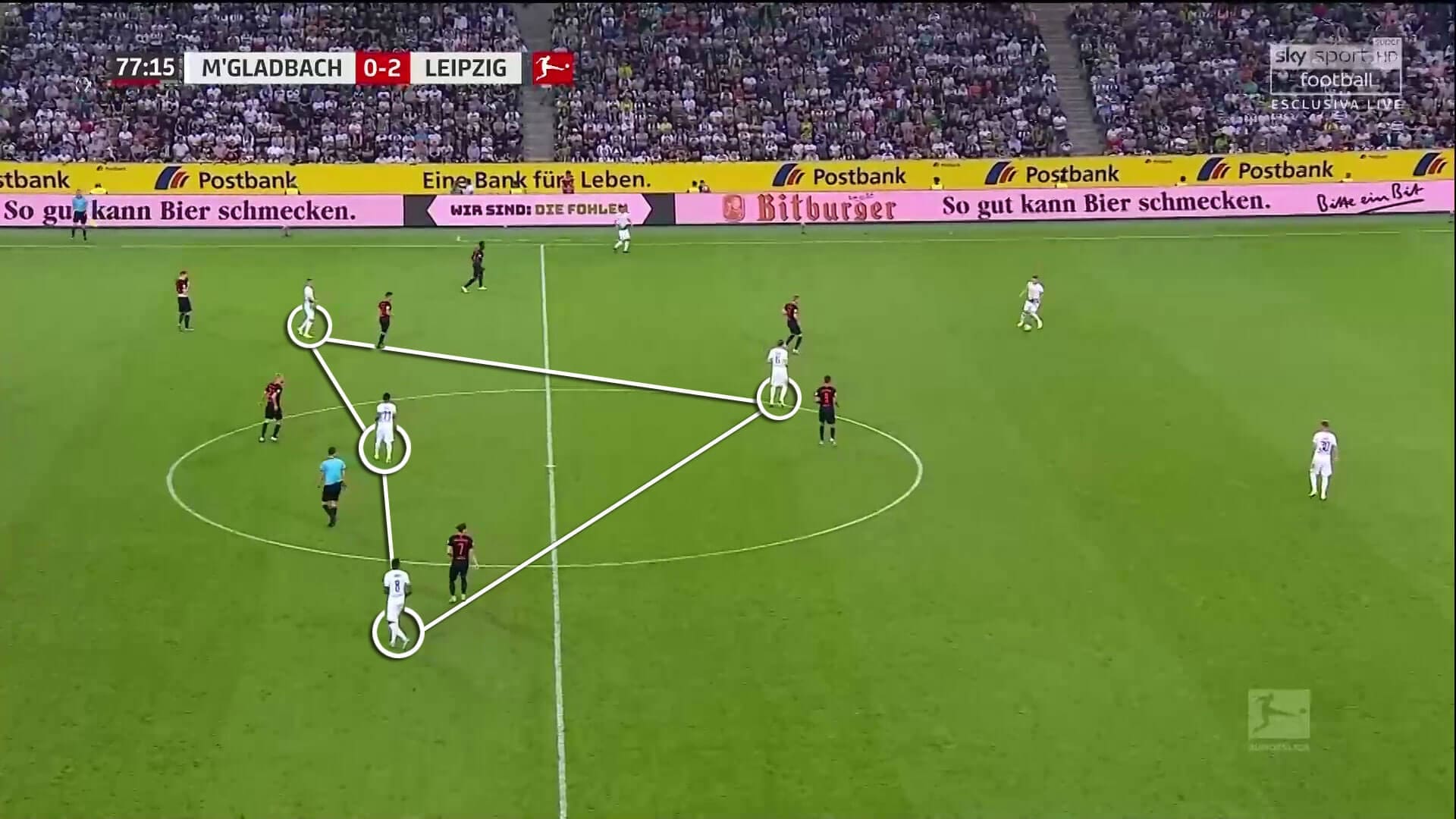
Despite the change in formations, Gladbach’s attacking principles remained the same. With the help of occupying the space between opposition defence and midfield, they forced Leipzig’s midfield to drop which opened up space for central midfielder Florian Neuhaus to structure the attacks.
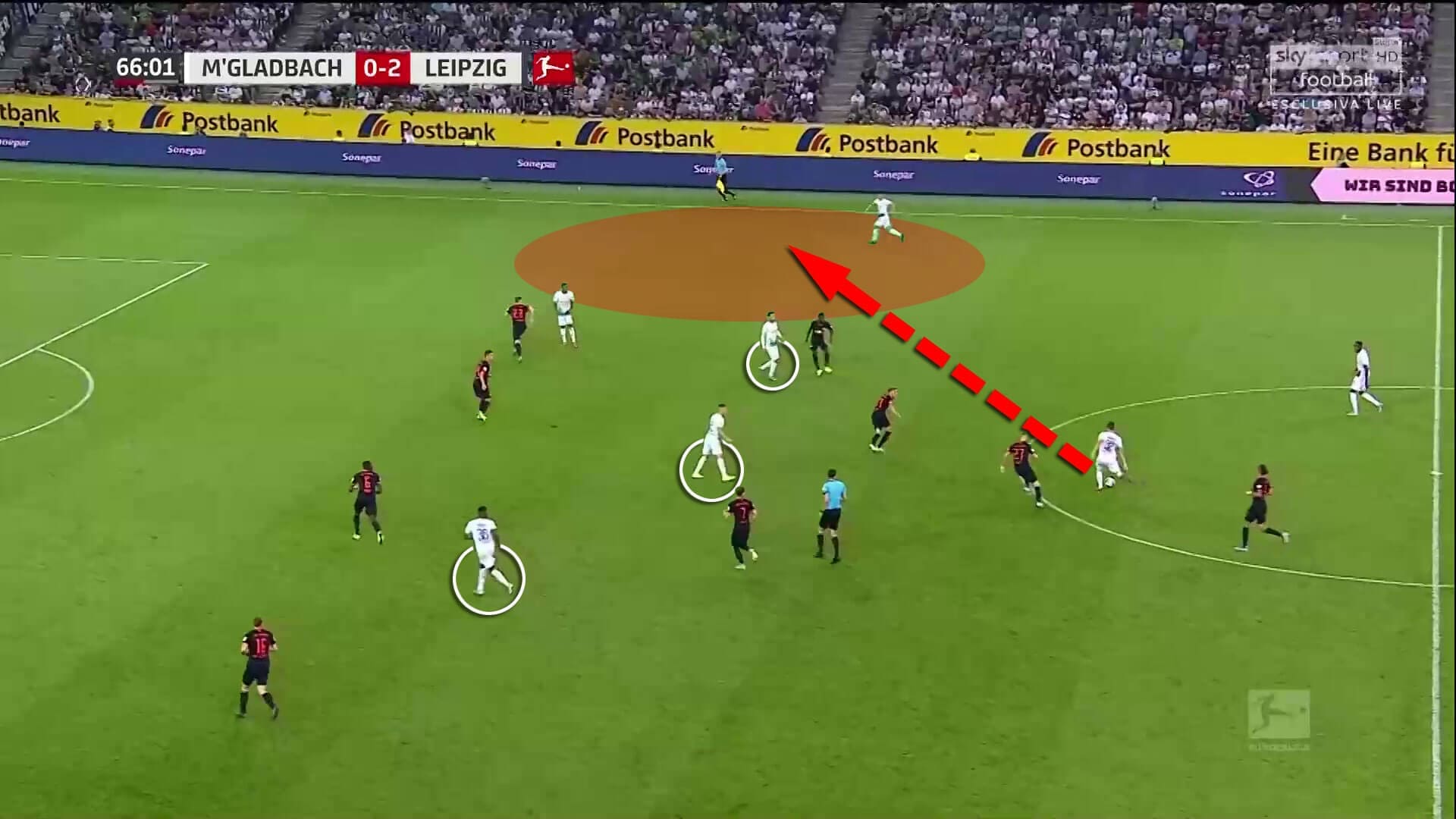
Neuhaus more and more often penalised Leipzig for their vulnerability on the flank by bringing right-back Lainer into play. Nevertheless, the goal-scoring opportunities from open play of Rose’s team remained unused.
In the end, Gladbach succeeded to score a goal after a set-piece. But due to an individual mistake in the back which allowed Werner to score his third goal, Leipzig secured their third win in a row.
Conclusion
All in all, Nagelsmann’s Leipzig were capable of winning against Marco Rose’s Gladbach due to their effectiveness in the first half as well as their counter-attacking threat throughout the whole game. Leipzig overall created much bigger opportunities and therefore also deserved the win as the xG values prove.
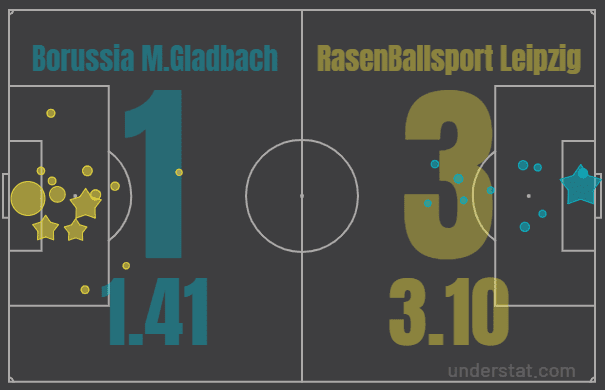
Nevertheless, Borussia Mönchengladbach, as depicted in our analysis, also showed a convincing performance with a lot of interesting attacking concepts. Their asymmetrical shape, overloads, and the offensive positioning of their advanced midfielders led to some good opportunities. It will be interesting to see whether Gladbach can be successful with these concepts in the upcoming Bundesliga matches.

If you love tactical analysis, then you’ll love the digital magazines from totalfootballanalysis.com – a guaranteed 100+ pages of pure tactical analysis covering topics from the Premier League, Serie A, La Liga, Bundesliga and many, many more. Buy your copy of the August issue for just ₤4.99 here.

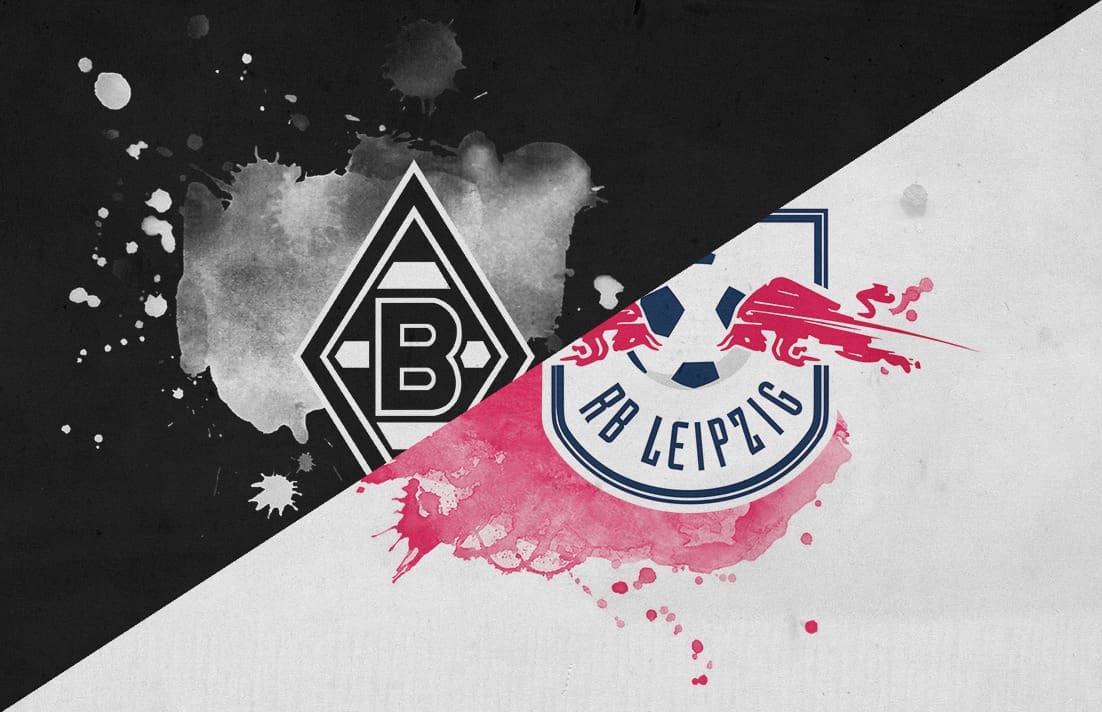



Comments